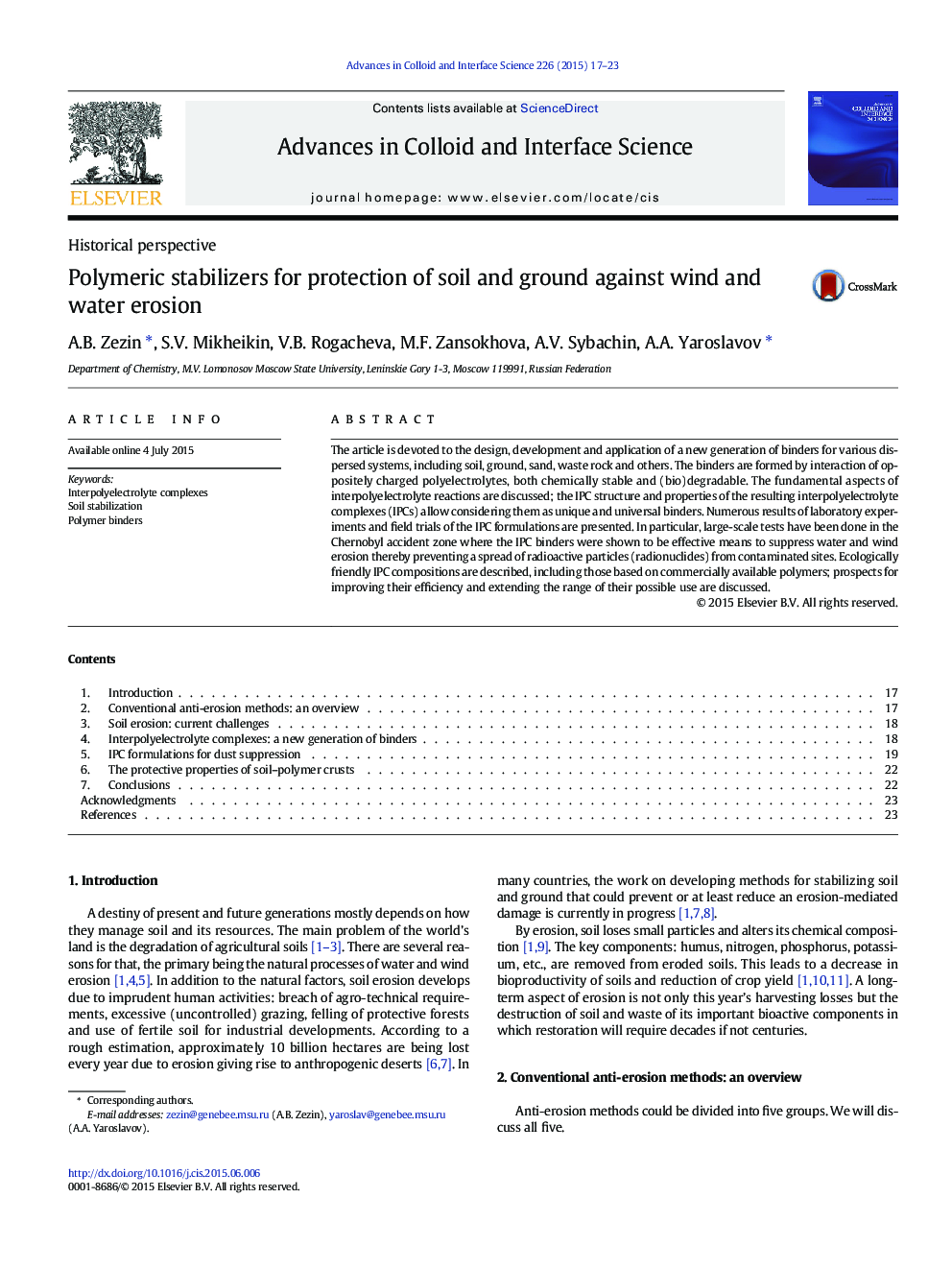| Article ID | Journal | Published Year | Pages | File Type |
|---|---|---|---|---|
| 590636 | Advances in Colloid and Interface Science | 2015 | 7 Pages |
•A new generation of polymer binders for soil is described.•The binders are formed by interaction of oppositely charged polyelectrolytes.•Results of laboratory experiments and field trials of the binders are presented.•The binders were shown to be effective means to suppress water and wind erosion.
The article is devoted to the design, development and application of a new generation of binders for various dispersed systems, including soil, ground, sand, waste rock and others. The binders are formed by interaction of oppositely charged polyelectrolytes, both chemically stable and (bio)degradable. The fundamental aspects of interpolyelectrolyte reactions are discussed; the IPC structure and properties of the resulting interpolyelectrolyte complexes (IPCs) allow considering them as unique and universal binders. Numerous results of laboratory experiments and field trials of the IPC formulations are presented. In particular, large-scale tests have been done in the Chernobyl accident zone where the IPC binders were shown to be effective means to suppress water and wind erosion thereby preventing a spread of radioactive particles (radionuclides) from contaminated sites. Ecologically friendly IPC compositions are described, including those based on commercially available polymers; prospects for improving their efficiency and extending the range of their possible use are discussed.
Graphical abstractFigure optionsDownload full-size imageDownload as PowerPoint slide
